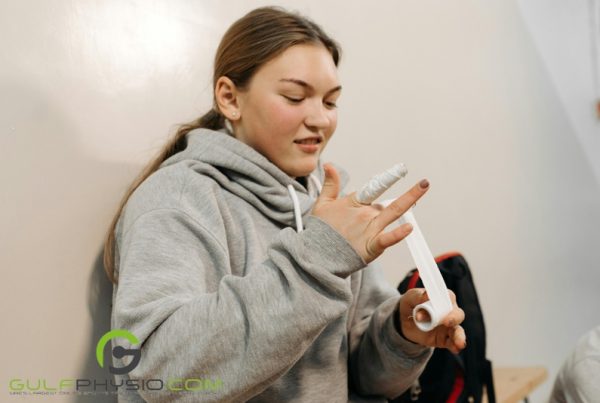Every year, over 350,000 cardiac arrests occur outside hospitals in the United States alone, according to the American Heart Association (AHA). Sadly, nearly 90% of these incidents are fatal when victims don’t receive immediate help. However, CPR (Cardiopulmonary Resuscitation) performed within the first few minutes can double or even triple a person’s chance of survival.

From its early experimental roots in the 1700s to the modern, science-backed technique used today, CPR has evolved into one of the most critical life-saving procedures in emergency medicine. With global training programs now reaching millions each year, the method continues to save countless lives — proving that a few learned steps can mean the difference between life and death.
In this article, we’ll explore the fascinating history of CPR, how it developed over time, provide valid statistics, and explain why understanding its evolution helps us appreciate its role in modern healthcare and public safety.
CPR stands for Cardiopulmonary Resuscitation.
It’s a life-saving emergency procedure that combines chest compressions and rescue breaths to help maintain blood flow and oxygen circulation in a person whose heart has stopped beating or who is not breathing normally.
In simpler terms, CPR helps keep the brain and vital organs alive until professional medical help arrives.
When was CPR Invented?
A team of American doctors — Dr. Peter Safar, Dr. James Elam, and Dr. William Kouwenhoven — who combined mouth-to officially developed CPR in 1960-mouth resuscitation with chest compressions to create the modern technique we use today.
However, the roots of CPR go back centuries:
- In the 1700s, early resuscitation attempts involved bellows and rolling techniques to revive drowning victims.
- By the 1950s, doctors discovered that mouth-to-mouth breathing could effectively provide oxygen.
- Then in 1960, the integration of artificial respiration with external chest compressions marked the official birth of CPR as a standardized medical procedure.
Since then, CPR has continued to evolve — with ongoing research, updated guidelines, and global training efforts making it one of the most essential emergency life-saving skills in the world.
Who is Known as the Father of CPR?
The Father of CPR is Dr. Peter Safar.
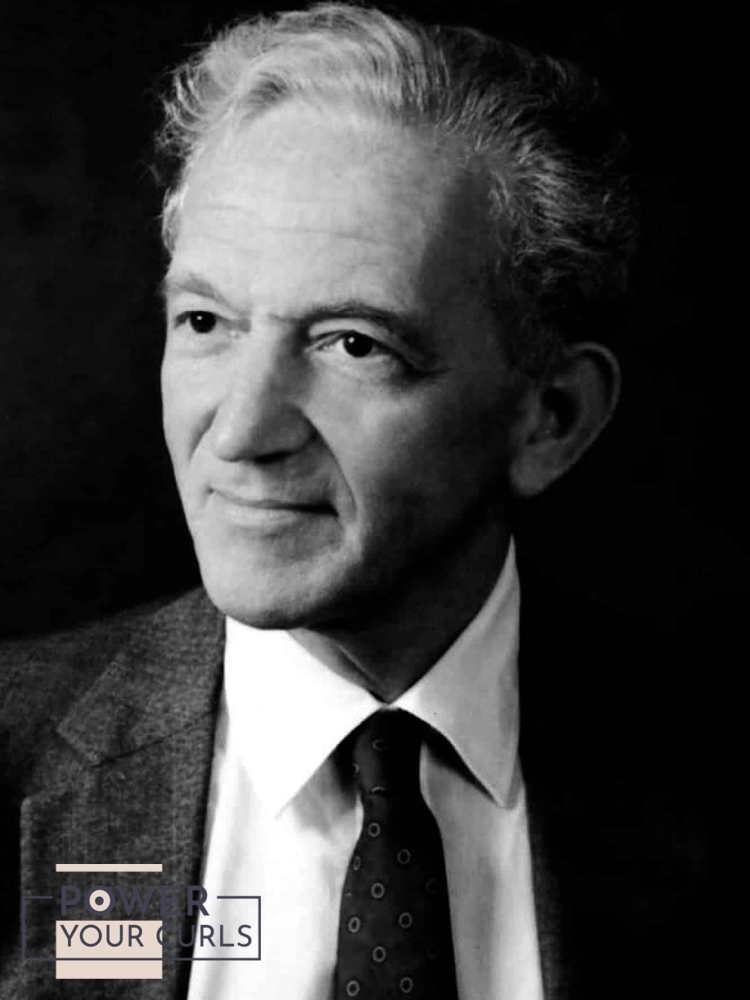
He was an Austrian anesthesiologist who, along with Dr. James Elam, developed the modern method of Cardiopulmonary Resuscitation (CPR) in the late 1950s. Dr. Safar’s pioneering work combined mouth-to-mouth resuscitation (to deliver oxygen) with chest compressions (to maintain blood circulation), creating the foundation of the CPR technique used worldwide today.
Dr. Safar didn’t just invent the method — he also advocated for widespread CPR training for both medical professionals and the general public. His work has saved millions of lives globally, cementing his legacy as the Father of CPR and modern resuscitation medicine.
How Does CPR Work?
CPR (Cardiopulmonary Resuscitation) works by manually keeping blood and oxygen flowing through the body when a person’s heart and breathing have stopped. It acts as a temporary replacement for the heart and lungs until professional medical help arrives or the heart starts beating again.
Here’s how it works step by step:
- Chest Compressions:
- When you press firmly on the center of the chest, you manually pump the heart, helping to circulate blood to the brain and vital organs.
- This prevents brain damage and organ failure caused by lack of oxygen.
- Rescue Breaths (in traditional CPR):
- By giving mouth-to-mouth breaths, you deliver oxygen directly into the person’s lungs.
- This ensures the blood being circulated by chest compressions carries oxygen to vital tissues.
- Continuous Circulation:
- Alternating between compressions and breaths keeps oxygen-rich blood moving, sustaining life until advanced medical support—like defibrillation or emergency care—can restart the heart.
In simple terms, CPR helps buy time — keeping the body alive and the brain functioning when the heart can’t do its job.
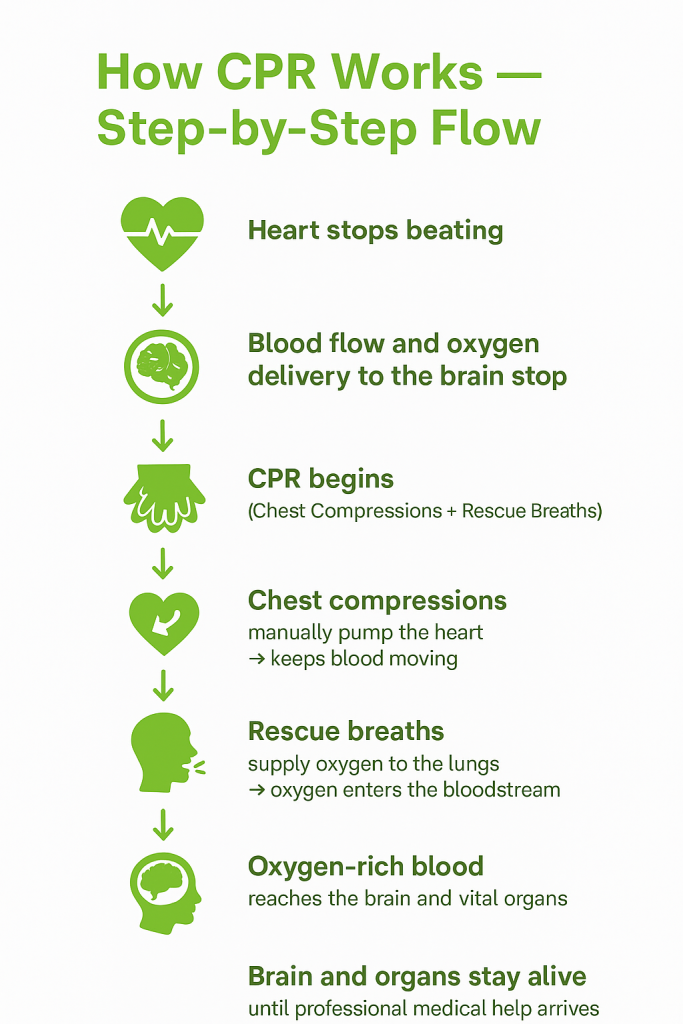
10 Unknown Facts about CPR
Even though CPR has been saving lives for over six decades, many people still don’t know how powerful—or under-used—it really is. From surprising survival statistics to lesser-known insights about who performs CPR and when, these facts reveal just how crucial this simple technique can be.
Let’s uncover some eye-opening, data-backed facts about CPR that might change the way you view emergency response forever.
- CPR can double or triple survival chances.
According to the American Heart Association (AHA), immediate CPR can double or even triple a cardiac arrest victim’s chance of survival. - Most cardiac arrests happen outside hospitals.
Nearly 70% of cardiac arrests occur at home or in public places, meaning bystander CPR is often the only immediate help. - Only 46% of cardiac arrest victims receive bystander CPR.
Despite its life-saving potential, less than half of victims receive CPR from someone nearby before emergency help arrives. - Brain damage can start within 4 minutes.
The brain can suffer irreversible damage after just 4–6 minutes without oxygen, making quick CPR critical. - Hands-only CPR is nearly as effective as traditional CPR.
Studies show that for adult cardiac arrests, chest compressions alone can be just as effective as compressions plus rescue breaths in the first few minutes. - Women are less likely to receive CPR in public.
Research published in Circulation found that bystanders perform CPR on women 27% less often than on men, mainly due to fear or hesitation. - Survival decreases by 7–10% every minute without CPR.
For every minute that passes without CPR, a person’s survival chances drop by up to 10%. - Each year, people train millions, but it is not enough.
The AHA estimates that over 12 million people learn CPR annually, yet global awareness remains low, especially in developing countries. - AEDs boost survival by over 50%.
Using an Automated External Defibrillator (AED) alongside CPR within 3–5 minutes can increase survival rates to above 50%. - Children as young as 9 can effectively perform CPR.
Studies show that with proper training, kids aged 9 and up can deliver effective compressions and understand the basics of emergency response.
CPR History Timeline
From ancient methods like bellows and chest compressions to today’s scientifically proven techniques, the history of CPR reflects centuries of trial, error, and innovation. Understanding how resuscitation methods evolved over time helps us appreciate the life-saving knowledge we often take for granted today.
This timeline highlights the key milestones — from the earliest attempts to modern guidelines — showing how CPR has developed into the highly effective practice that continues to save millions of lives worldwide.
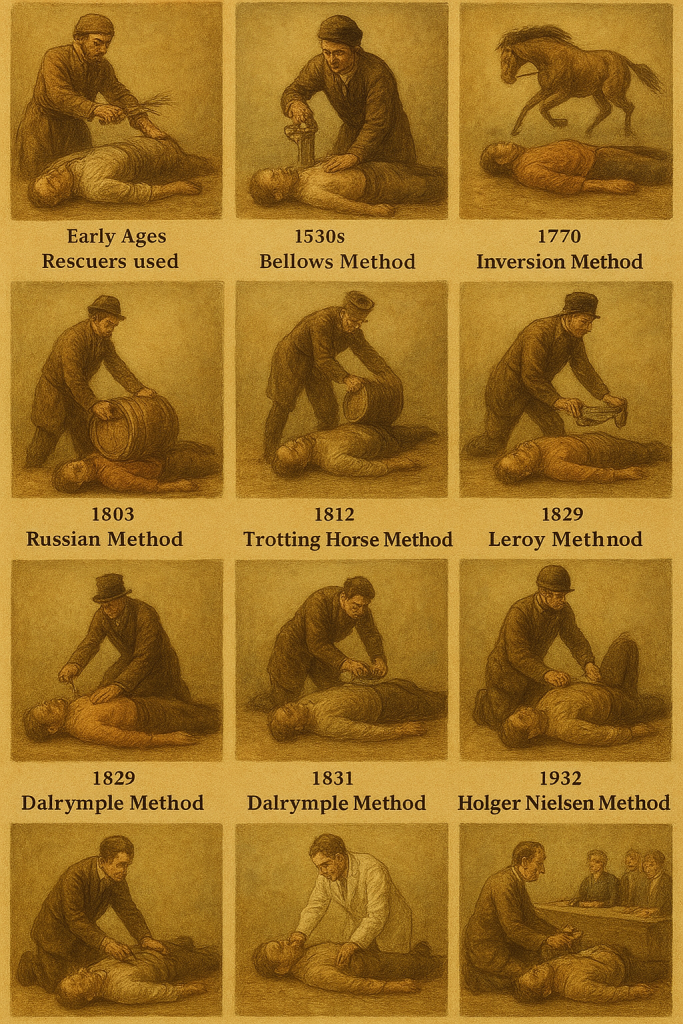
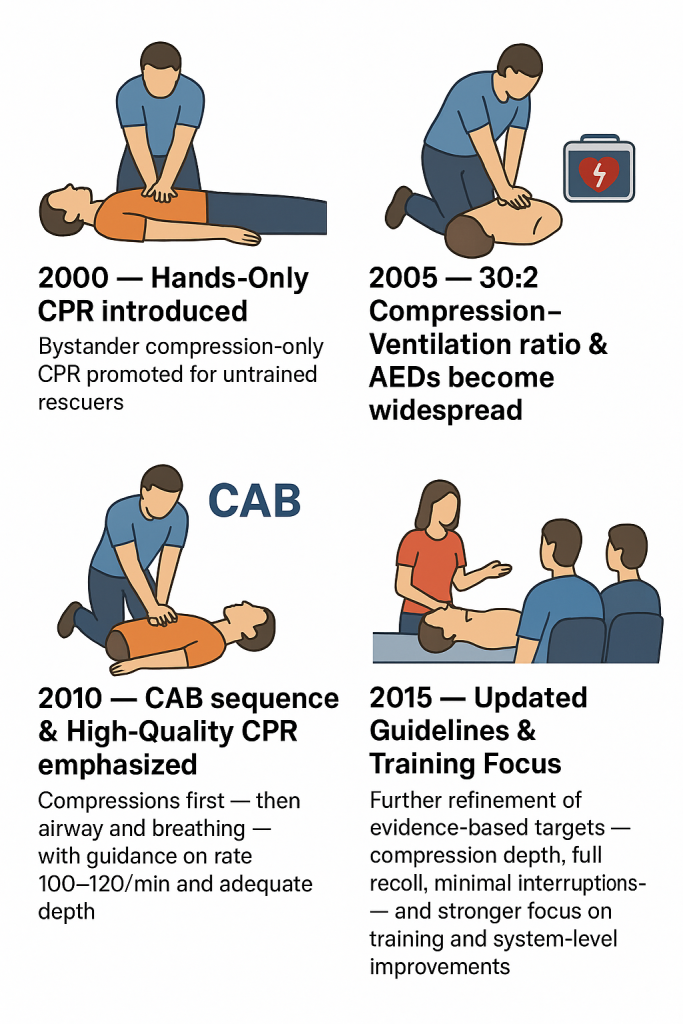
Hands-Only CPR Steps
Hands-Only CPR is a simple, two-step method that anyone can perform to help save a life during sudden cardiac arrest — even without formal training. It focuses solely on chest compressions, eliminating the hesitation often caused by mouth-to-mouth concerns. Here’s how to do it correctly:
- Call for Help
- Dial emergency services (e.g., 999 or 911) immediately.
- If others are around, have someone else make the call while you start CPR.
- If an AED (Automated External Defibrillator) is available, ask someone to bring it right away.
- Dial emergency services (e.g., 999 or 911) immediately.
- Push Hard and Fast
- Place the heel of one hand on the center of the chest (between the nipples), and your other hand on top.
- Keep your arms straight and shoulders directly above your hands.
- Push hard — about 5–6 cm (2 inches) deep — and at a rate of 100–120 compressions per minute (think of the beat of “Stayin’ Alive” by the Bee Gees).
- Let the chest fully rise between each compression — don’t lean on it.
- Continue until medical help arrives, an AED is ready, or the person starts breathing normally.
- Place the heel of one hand on the center of the chest (between the nipples), and your other hand on top.
CPR Survival Rates by Age
Survival rates after cardiac arrest depend on age, health condition, and how rapidly CPR is initiated. Generally, younger individuals have a higher chance of recovery because their hearts and organs can tolerate oxygen deprivation better.
The following table shows estimated average survival rates by age group, based on global cardiac arrest studies and hospital data.
CPR Survival Rates by Country
Survival rates after cardiac arrest differ greatly across countries due to variations in emergency response systems, bystander CPR training, and AED availability.
Nations with strong public-training programs and rapid emergency services generally report higher survival outcomes.
CPR Statistics Outside Hospital
Out-of-hospital cardiac arrests (OHCA) are one of the leading causes of sudden death worldwide. Survival chances heavily depend on how quickly bystanders start CPR and take action before emergency medical services arrive.
Despite growing awareness, survival rates outside hospitals remain relatively low compared to in-hospital cases.
- Approximately 8–10% of people survive a cardiac arrest that occurs outside of a hospital.
- When bystanders perform CPR immediately, survival rates can rise to 15–20%.
- Without any bystander intervention, survival drops sharply to just 2–4%.
- Someone witnesses nearly 40–50% of out-of-hospital cardiac arrests.
- Only about 35–45% of victims actually receive CPR from a bystander before help arrives.
- Emergency medical services (EMS) typically reach patients in 6–8 minutes in urban areas, but in rural regions it can take 10–12 minutes or more.
- About 70% of all out-of-hospital cardiac arrests happen at home, making public CPR training crucial for families and communities
Conclusion
The history of CPR reflects humanity’s relentless pursuit of saving lives. From its early experimental beginnings in the 18th century to the modern, hands-only techniques of today, CPR has evolved into a scientifically proven life-saving practice.
Data shows that timely CPR can significantly improve survival rates across all age groups and settings, highlighting its critical importance. Understanding its development not only honors the innovators behind it but also emphasizes the need for widespread CPR knowledge and training.
By learning and practicing CPR, anyone can become a vital link in the chain of survival, turning knowledge into action when every second counts.

